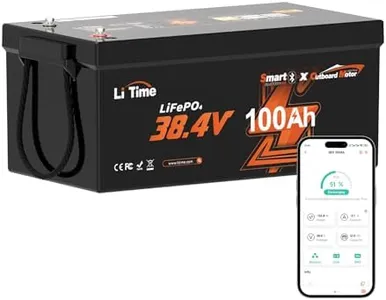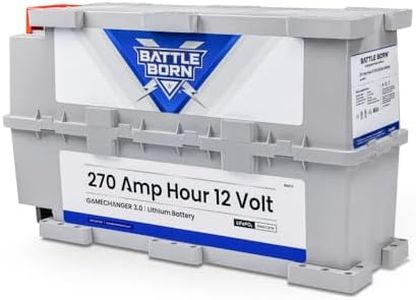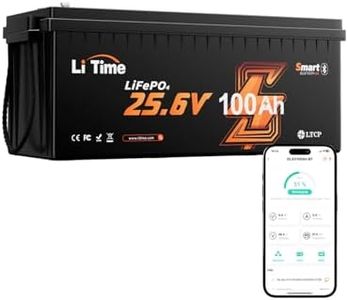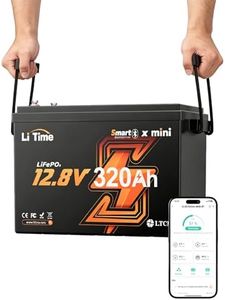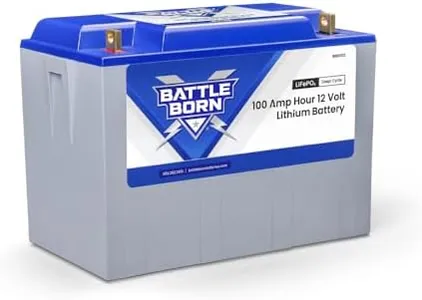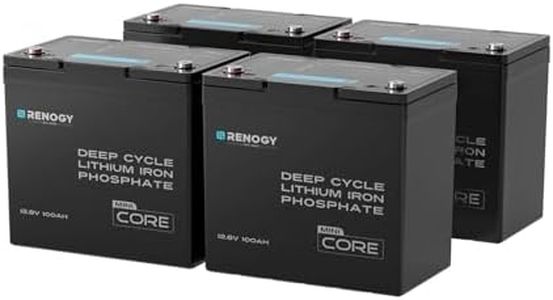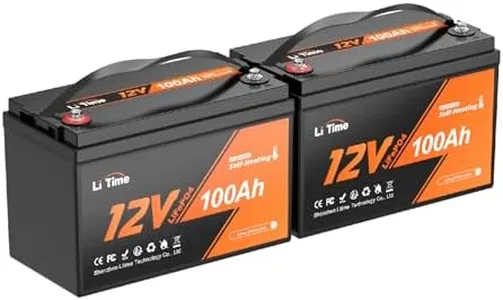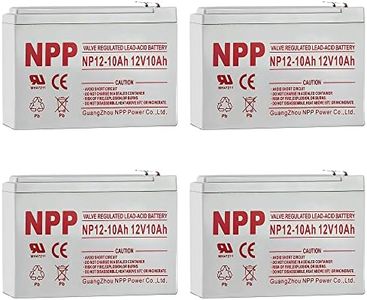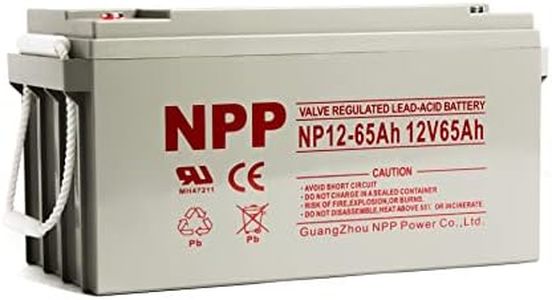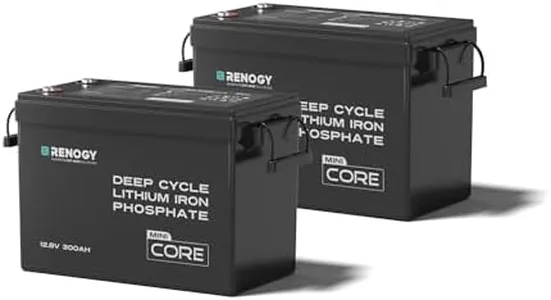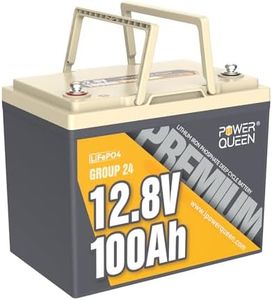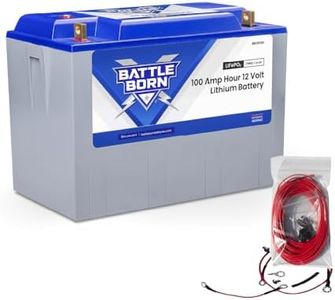10 Best Lithium Battery For Kayak 2025 in the United States
Our technology thoroughly searches through the online shopping world, reviewing hundreds of sites. We then process and analyze this information, updating in real-time to bring you the latest top-rated products. This way, you always get the best and most current options available.

Our Top Picks
Winner
270Ah 12V Lithium-Ion (LiFePO4) RV, Van, Marine, Solar, & Off Grid Battery - Internal BMS, High & Low Temperature Protection - Battle Born Batteries
Most important from
867 reviews
The Battle Born 270Ah 12V LiFePO4 battery is a powerful choice for kayak users who need a reliable, long-lasting power source, especially if they're outfitting larger electric kayaks or using it for extended trips with extra gear like trolling motors or onboard electronics. The 270Ah capacity offers plenty of power, and the 12V rating fits most marine and off-grid setups. Its lithium-ion chemistry means it’s lighter and more efficient than traditional lead-acid batteries, though at 80.8 pounds, it’s still somewhat heavy and may require careful handling. The battery’s patented size is designed to fit well in tight spaces, which is helpful in the limited storage areas of a kayak or small boat.
It includes an internal Battery Management System (BMS), protecting against overheating and extreme temperatures, which adds safety and durability. Battle Born batteries are known for lasting many charge cycles—usually 3000 or more—which means long-term value. This battery is not explicitly rated for water resistance, so it needs to be securely housed in a waterproof compartment on your kayak.
This battery is well suited for serious kayakers or small boaters who want dependable, high-capacity power and are prepared to manage its weight and installation requirements.
Most important from
867 reviews
LiTime 24V 100Ah Bluetooth LiFePO4 Lithium Battery, Low-Temp Cutoff Protection, Built-in 100A BMS, 4000+ Deep Cycles for Trolling Motors, RVs, Marine, Off-Grid, Home Energy
Most important from
146 reviews
The LiTime 24V 100Ah Bluetooth LiFePO4 battery is a strong choice for powering 24V trolling motors on kayaks or small boats, thanks to its solid 100Ah capacity and lightweight design at about 44 pounds—significantly lighter than traditional lead-acid batteries, making it easier to handle and install. Its compact size fits well in limited spaces often found on watercraft. With over 4,000 deep cycles at full discharge and even more at partial discharge, it promises long-lasting use, which is great if you rely on your kayak motor frequently. The built-in 100A Battery Management System adds safety by protecting against issues like overcharge and overheating.
Bluetooth connectivity is a convenient feature, letting you monitor battery status in real time via your phone, which helps avoid unexpected power loss during trips. However, it stops discharging below -4°F and charging below 32°F, so it's less suitable for very cold environments. The battery is not intended for engine starting or very high power surges, but it performs well for trolling motors and similar steady loads.
This battery offers a lightweight, durable, and smart solution for kayak users who need reliable, long-lasting power for their trolling motors, with some limitations in extreme cold conditions to keep in mind.
Most important from
146 reviews
LiTime12.8V 320Ah Mini LiFePO4 Battery, 4000+ Deep Cycles Bluetooth Lithium Battery, IP65 Waterproof, Backup Power for RV, Travel Trailer, Trolling Motor
Most important from
267 reviews
The LiTime 12.8V 320Ah Mini LiFePO4 battery is a strong choice for users needing a compact yet powerful lithium battery for kayaks, small boats, or RVs. Its capacity of 320Ah offers ample energy storage, surpassing many standard 300Ah 12V batteries, while being about one-third smaller in size. This makes it ideal for tight spaces where fitting a bulky battery is challenging. Weighing around 57 pounds, it’s lighter than traditional lead-acid batteries of similar capacity, which helps with easier installation and handling.
This battery holds over 4000 deep cycles, giving it a long life that suits frequent use on water or outdoor trips. It’s designed to handle tough conditions, featuring an IP65 rating that protects against water spray and dust, which is essential for marine environments. It also includes cold-weather protection down to -20℃, ensuring consistent performance even in cold climates.
One modern perk is the built-in Bluetooth 5.0, allowing users to monitor battery status like voltage and charge level via a smartphone app without extra hardware. This can help avoid unexpected power loss during trips and adds convenience. The battery excels in providing high capacity, durability, and smart monitoring in a compact waterproof package, making it particularly beneficial for kayakers or boaters who need reliable power without compromising space. Its weight might be a consideration depending on the size of the vessel.
